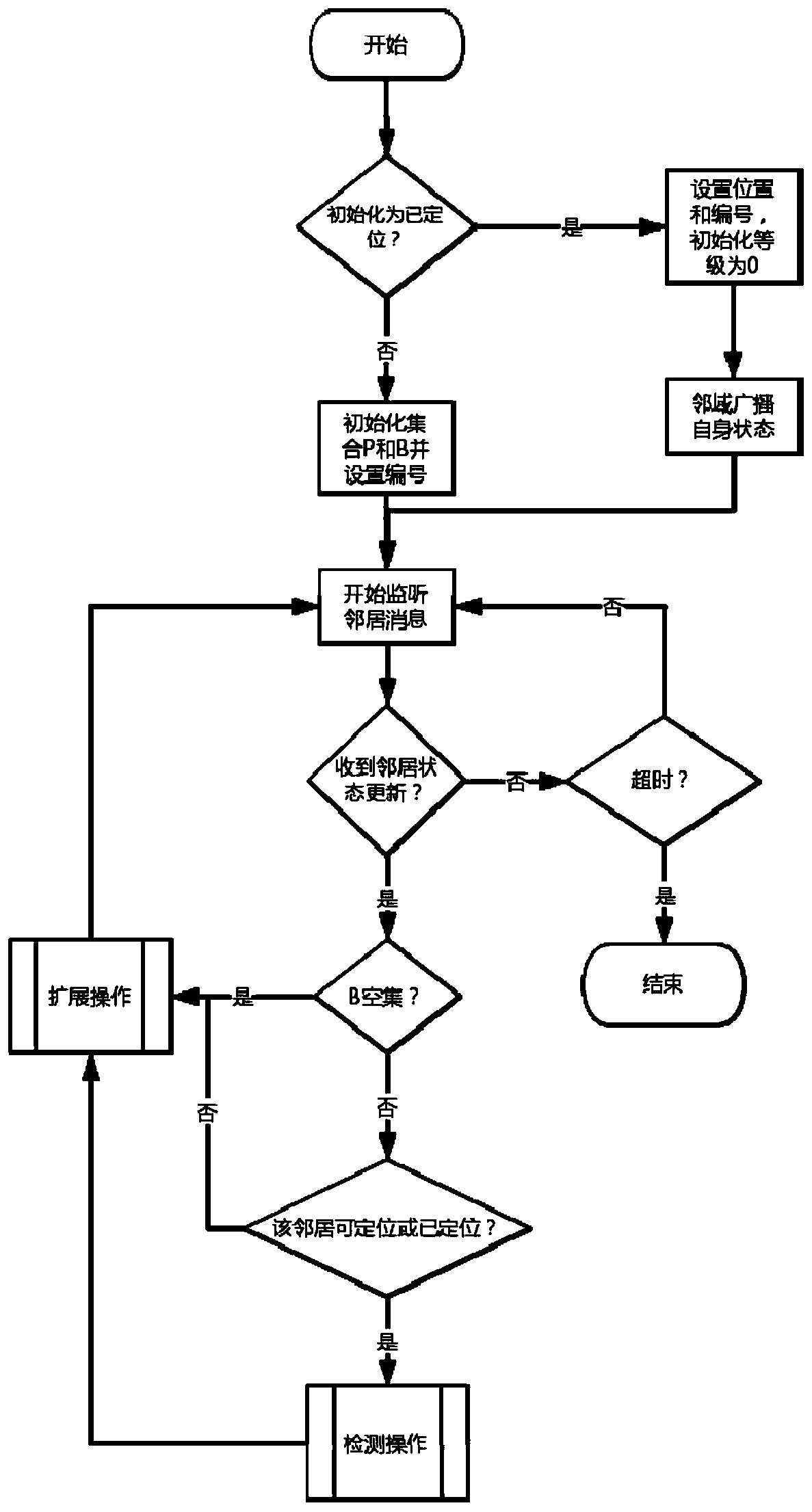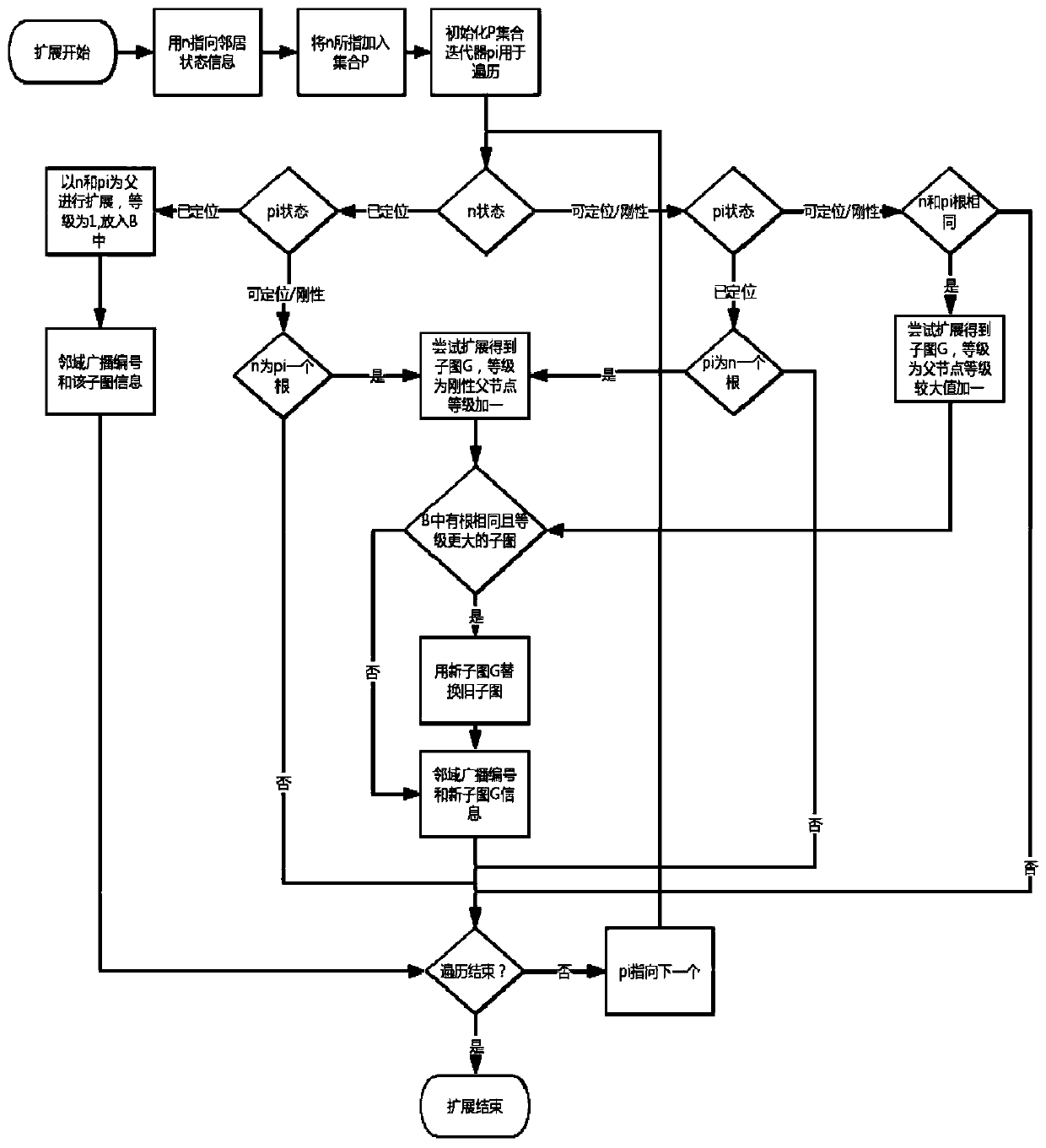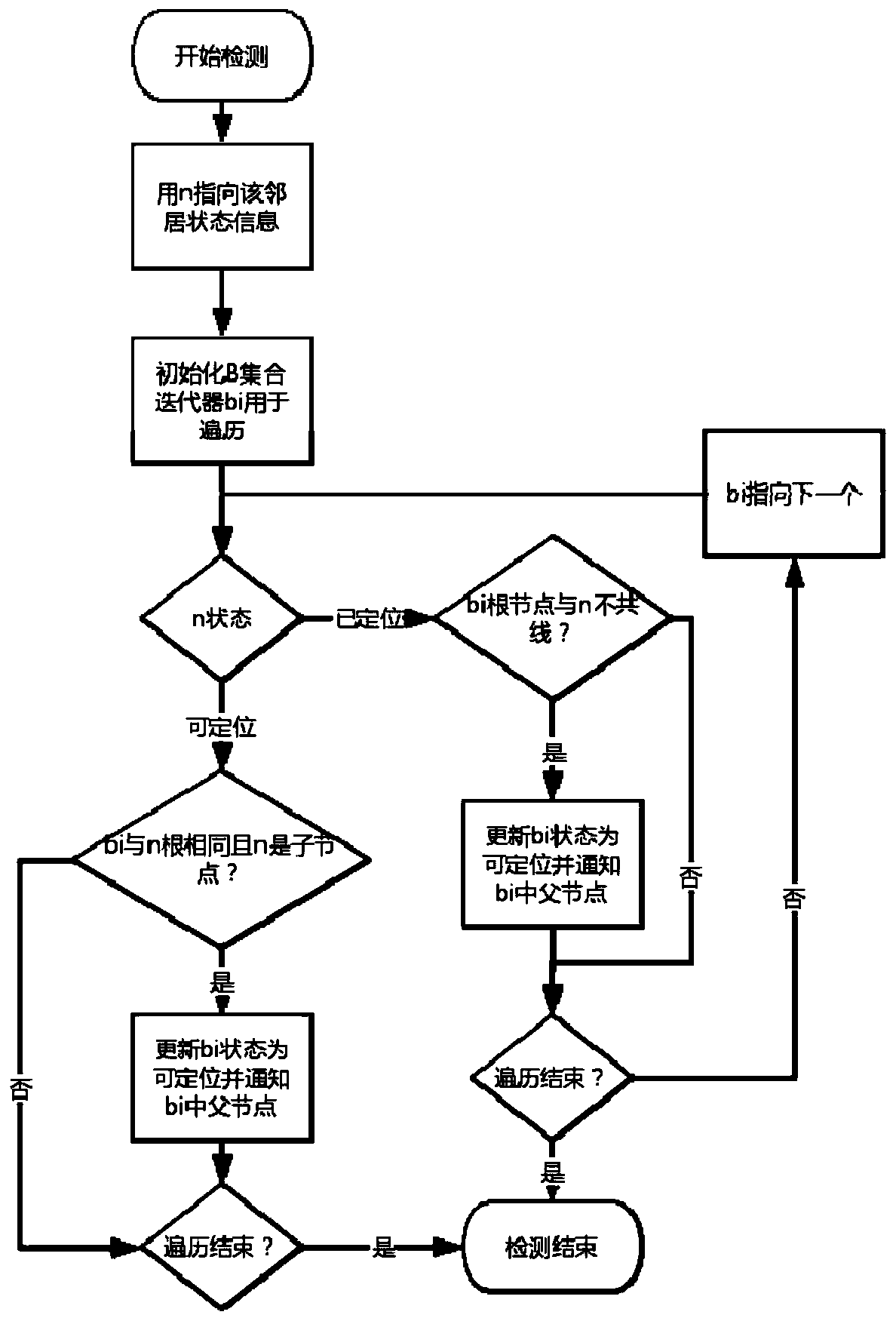A wireless sensor network node location detection method
A wireless sensor and network node technology, applied in wireless communication, network topology, electrical components, etc., can solve the problems of inapplicability, limitation, and time-consuming and labor-intensive establishment of wheel graphs, and achieve the effect of low cost and resource consumption
- Summary
- Abstract
- Description
- Claims
- Application Information
AI Technical Summary
Problems solved by technology
Method used
Image
Examples
Embodiment 1
[0039] This embodiment first describes the original graph algorithm. The algorithm defines an extended operation as follows:
[0040] Such as Figure 4 As shown, it is known that there is a graph K 2 , which consists of two nodes V 1 and V 2 and an undirected edge (V 1 ,V 2 ). By adding two undirected edges (V 1 ,a) and (V 2 ,a) and a node a into the graph, this way of adding a can be called an extension. where V1 and V 2 A pair of parent nodes called a is also the root node of the rigid subgraph formed by the expansion of a this time. If graph G is from K 2 After multiple expansion operations, for two points V in G i and V j , by adding two undirected edges (b,V i ) and (b, V j ) way to add a new point b to G is also an extension. V i and V i is called the parent node of b, and the K 2 The two points in are called its root nodes.
[0041] from K 2 An expansion is performed to obtain the simplest rigid graph, and the graph obtained by each subsequent expan...
PUM
 Login to View More
Login to View More Abstract
Description
Claims
Application Information
 Login to View More
Login to View More - R&D
- Intellectual Property
- Life Sciences
- Materials
- Tech Scout
- Unparalleled Data Quality
- Higher Quality Content
- 60% Fewer Hallucinations
Browse by: Latest US Patents, China's latest patents, Technical Efficacy Thesaurus, Application Domain, Technology Topic, Popular Technical Reports.
© 2025 PatSnap. All rights reserved.Legal|Privacy policy|Modern Slavery Act Transparency Statement|Sitemap|About US| Contact US: help@patsnap.com



